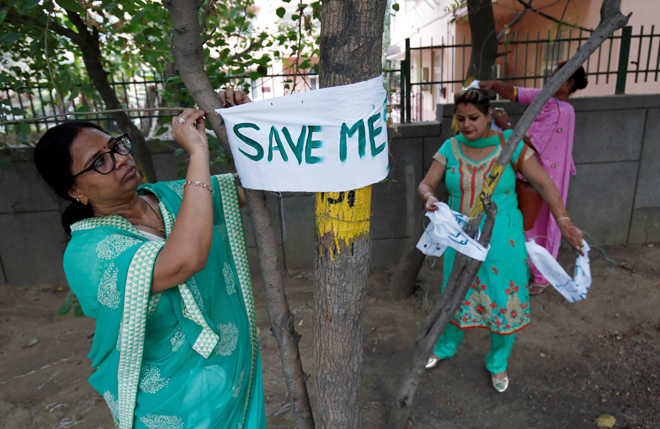
THE Delhi High Court has underscored the importance of eco-sustainable development when it stayed the axing of nearly 16,000 trees that were to make way for the redevelopment of some residential colonies for government employees in the posh but polluted South Delhi. The trigger was a Chipko movement-like protest by ordinary residents aghast by the prospect of depletion of the green belt. The city, already gasping for breath and parched as water resources dry up, just cannot afford any tinkering with its few remaining lungs. Rather, it must be planting trees to cover its deficit of nine lakh trees, as reported by the CAG.
Good housing for people is certainly imperative, but it cannot come at the cost of destroying forever the Capital’s tree cover. The contractor concerned needs to imaginatively work his way around. Given the urban space constraints, going vertical is the smartest option. The promise of replacing one tree with 10 saplings or replanting of trees has invariably proved to be expensively empty in the past. Sustained green pressure built by activist environmentalists and ordinary concerned citizens will hopefully axe the clearances given to the corporation. The resistance has a whiff of similar defiance of the cutters last year when citizens hugged trees and staved off their axing for a Metro project in Mumbai and the steel flyover in Bengaluru.
Hugging trees to save ecology is a practice resorted to in the country since centuries. The inherent wisdom of villagers to protect natural resources so as to harmoniously carry on with their lives and livelihood has had a telling effect on the indiscriminate felling of trees by outsiders in the name of development. In the 1970s, led by noted environmental Sunderlal Bahuguna, it came to be known as the Chipko Andolan as women in what is now Uttarakhand clung to the trees, asserting their right over nature. The earliest such movement is traced to the year 1730 when hundreds of residents of Rajasthan’s Khejarli village laid down their lives to protect trees. Now, it is for the Delhiites, 600 kms away from Khejarli, to put their arms around the trees against urban insanity.



























